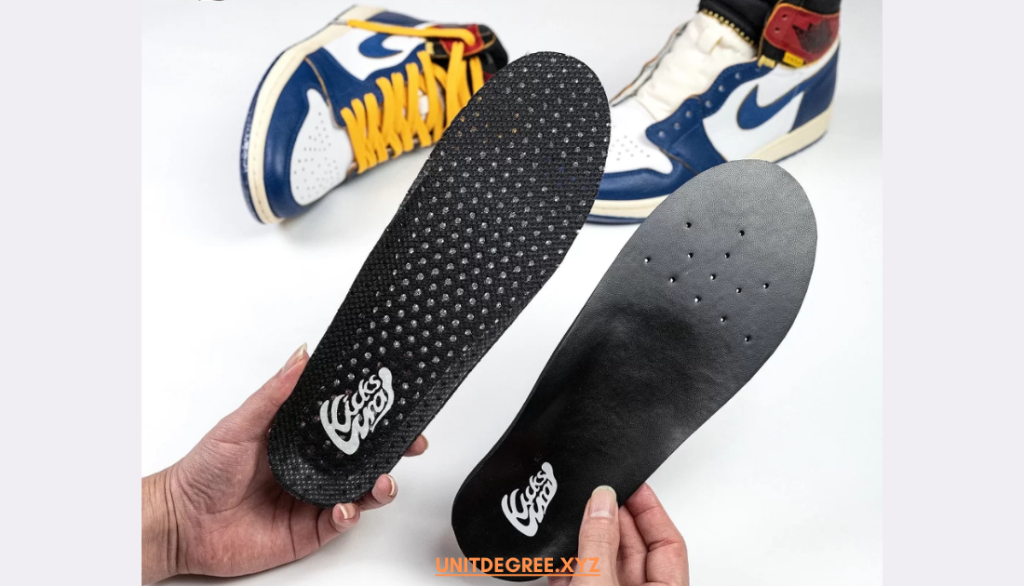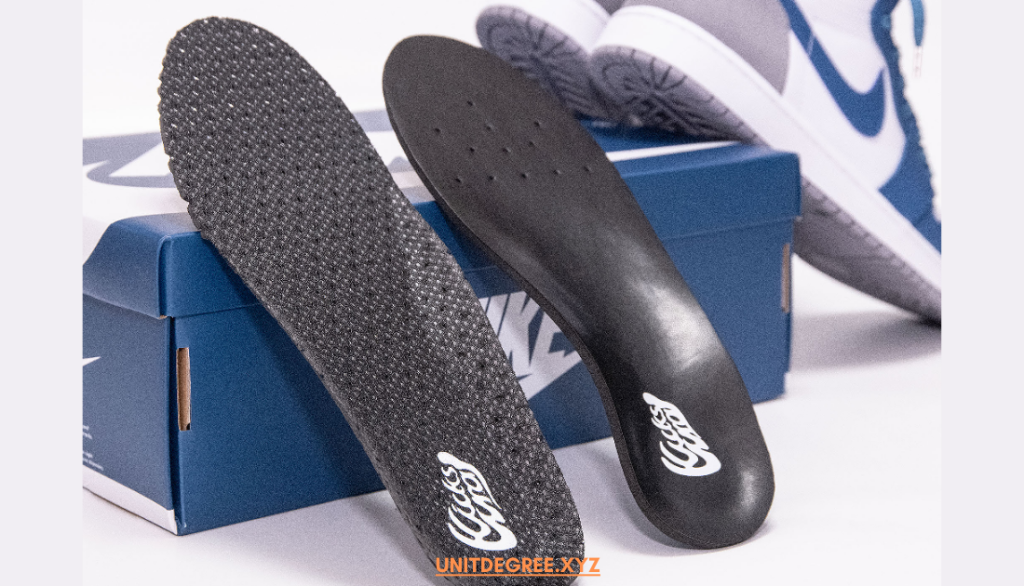Blog
Sneaker Insoles: The Complete Guide to Choosing the Right Support for Your Feet
When it comes to comfort and performance, sneaker insoles are essential. They can transform the feel of your favorite pair of sneakers, providing additional support, cushioning, and even improving posture. Whether you’re an athlete, someone who spends a lot of time on their feet, or simply want extra comfort, selecting the right sneaker insoles can make a world of difference. In this guide, we’ll dive into the benefits of sneaker insoles, the types available, and how to choose the best fit for your needs.
1. Why Sneaker Insoles Matter
For most people, sneakers are the go-to footwear for comfort. However, many sneaker designs come with standard insoles that may not provide sufficient support or cushioning for every foot type. This is where specialized sneaker insoles come into play. They enhance the fit, improve support, and can help address specific foot concerns like arch pain, plantar fasciitis, or heel discomfort.
Properly chosen sneaker insoles offer improved alignment, better weight distribution, and reduced strain on feet and legs. With the right insoles, you can prevent many common foot problems and extend the life of your sneakers. Moreover, sneaker insoles can increase your comfort level, which is essential for athletes, those with active lifestyles, or anyone who values foot health.
2. Types of Sneaker Insoles
Understanding the different types of sneaker insoles is crucial to finding the right one for your needs. Each type is designed to address specific concerns, so let’s explore the main categories:
a. Cushioning Insoles
Cushioning insoles are designed primarily for comfort. They feature soft materials, like gel or memory foam, that provide a plush feel underfoot. These insoles are great for people who stand for long hours, as they reduce foot fatigue by absorbing shock and minimizing pressure. Although they don’t offer much arch support, cushioning insoles can make a noticeable difference for casual use.
b. Arch Support Insoles
If you have high arches or flat feet, arch support insoles are ideal. These insoles provide structured support under the arch, helping distribute weight evenly and preventing overpronation or under-pronation. Arch support insoles come in varying levels of firmness, so you can choose one based on your comfort preferences. They are especially beneficial for people with plantar fasciitis, as they relieve stress on the arch.
c. Orthotic Insoles
Orthotic insoles are specially designed for those with specific foot issues or medical conditions. Made to correct alignment and support biomechanical issues, these insoles often require a prescription or are customized for individual needs. However, over-the-counter orthotic insoles are also available, offering extra support and stability for those with mild foot problems. Orthotic insoles are a great option if you need added support to correct your gait or reduce discomfort.
d. Athletic Performance Insoles
Athletic insoles are designed for high-impact activities. They feature shock-absorbing materials, moisture-wicking properties, and targeted support areas for enhanced performance. Many athletic insoles come with extra heel and forefoot cushioning to absorb impact during sports like running, basketball, or tennis. If you’re an athlete, investing in a quality pair of athletic insoles can boost your performance and protect your feet from stress and injury.
3. Materials Used in Sneaker Insoles
The material of your sneaker insoles can impact comfort, durability, and support. Let’s look at the common materials used and their benefits:
a. Gel
Gel insoles are popular for their shock-absorbing properties. They provide a soft, cushioned feel and are ideal for people who prioritize comfort over firm support. Gel is often used in the heel and forefoot areas to reduce impact. However, gel insoles may lack the support that some people need, so they are best suited for casual wear.
b. Memory Foam
Memory foam is known for molding to the shape of your foot, providing customized comfort. It offers excellent cushioning and is often used in insoles designed for all-day comfort. Memory foam sneaker insoles are ideal for those who stand for extended periods, but they may compress over time, reducing their effectiveness.
c. EVA (Ethylene Vinyl Acetate)
EVA is a lightweight, flexible material that offers both cushioning and support. It’s commonly used in athletic insoles because of its ability to absorb shock without adding bulk. EVA insoles are durable and suitable for various activities, making them a versatile choice for athletes and active individuals.
d. Cork
Cork insoles provide natural support and are both lightweight and eco-friendly. Cork molds to the shape of your foot over time, offering a semi-custom fit. These insoles are highly durable and provide moderate support, making them a good option for casual or everyday wear.
4. Choosing the Right Sneaker Insoles
Finding the right sneaker insoles involves considering your unique needs and lifestyle. Here’s how to choose the best option:
a. Identify Your Foot Type
Knowing your foot type is crucial for selecting insoles. If you have flat feet, arch support insoles will prevent discomfort and reduce strain. High arches, on the other hand, may benefit from cushioned insoles that provide a softer surface and balance weight distribution.
b. Consider Your Daily Activities
Your lifestyle plays a big role in determining the right sneaker insoles. For athletes or those with active lifestyles, performance insoles with shock absorption are ideal. If you’re on your feet all day, memory foam or gel insoles can offer relief. Orthotic insoles are a good option if you have specific foot issues that require extra support.
c. Look for the Right Thickness
The thickness of your sneaker insoles can affect comfort and fit. Thin insoles are ideal for tighter sneakers, while thicker ones work well in more spacious shoes. Consider the fit of your sneakers before choosing insoles, as an improper fit can lead to discomfort.
d. Try Them Out
Many stores allow you to test insoles for comfort. Trying them out in your sneakers can give you a better idea of how they feel and fit. A good insole should provide support without feeling bulky or uncomfortable. Testing before buying can save you from unnecessary returns and ensure you get the most comfortable option.

5. How Sneaker Insoles Benefit Your Feet
Sneaker insoles offer several benefits beyond comfort. Here’s how they can improve foot health and overall well-being:
a. Enhanced Comfort
Insoles add an extra layer of cushioning, which makes walking or standing for long periods more comfortable. This is especially important for those with sensitive feet or high arches. The added comfort reduces fatigue, making it easier to stay active throughout the day.
b. Improved Alignment and Posture
Sneaker insoles provide support that helps align the feet, ankles, and legs. Better alignment reduces strain on the lower body, helping improve posture and reduce pain in the knees, hips, and back. Orthotic insoles are especially effective for correcting alignment and posture issues.
c. Reduced Risk of Injury
For athletes, quality insoles reduce impact and prevent foot injuries. Insoles with good shock absorption decrease the pressure on joints, minimizing the risk of stress-related injuries. Athletic insoles with targeted support are particularly helpful for runners and sports enthusiasts, reducing the chance of injuries like plantar fasciitis or shin splints.
d. Enhanced Shoe Fit
Sneaker insoles improve the fit of your shoes, preventing slipping, blisters, and discomfort. A snug fit is crucial for stability and can make your sneakers feel like they were custom-made. Properly fitted insoles also extend the life of your shoes by reducing wear and tear.
6. Caring for Your Sneaker Insoles
To get the most out of your sneaker insoles, it’s important to care for them properly. Here are some tips:
- Regular Cleaning: Remove your insoles and clean them every few weeks. Use a mild soap and warm water to keep them fresh and odor-free. Allow them to air-dry completely before placing them back in your sneakers.
- Avoid Overuse: Insoles wear down over time, so it’s good to replace them regularly, especially if you’re using them daily. Most insoles last between six months to a year, depending on usage.
- Rotate Pairs: If you wear sneakers daily, consider buying multiple pairs of insoles and rotating them. This not only prolongs their lifespan but also gives your feet a chance to rest in different support levels.
Conclusion
Sneaker insoles are an often-overlooked accessory that can drastically improve comfort, support, and foot health. From cushioning to support and specialized orthotics, finding the right insole is essential to getting the most out of your sneakers. Whether you’re an athlete, someone who’s on their feet all day, or simply looking to make your sneakers more comfortable, the right sneaker insoles are worth the investment. So take the time to understand your needs, try different options, and give your feet the support they deserve.

